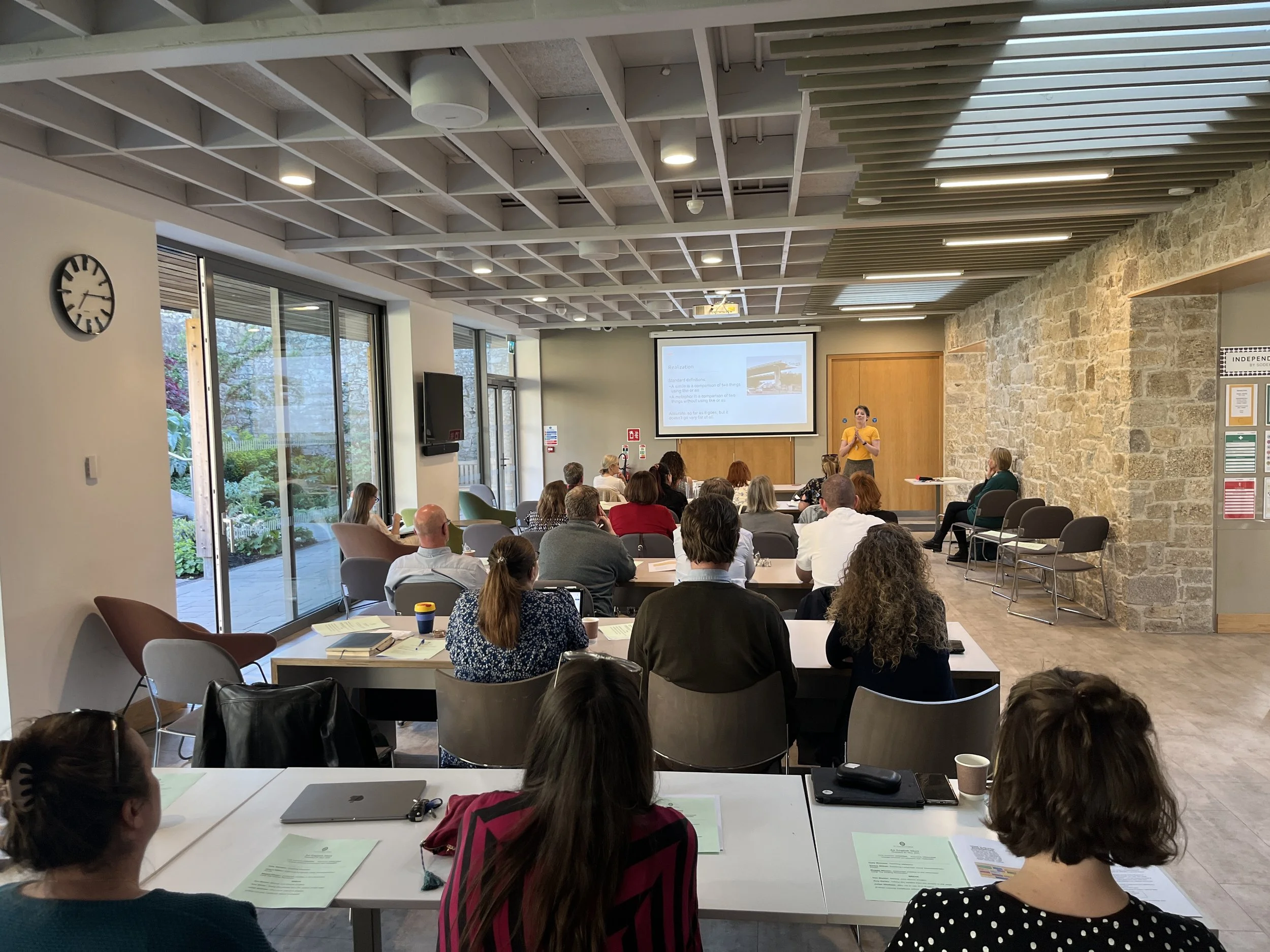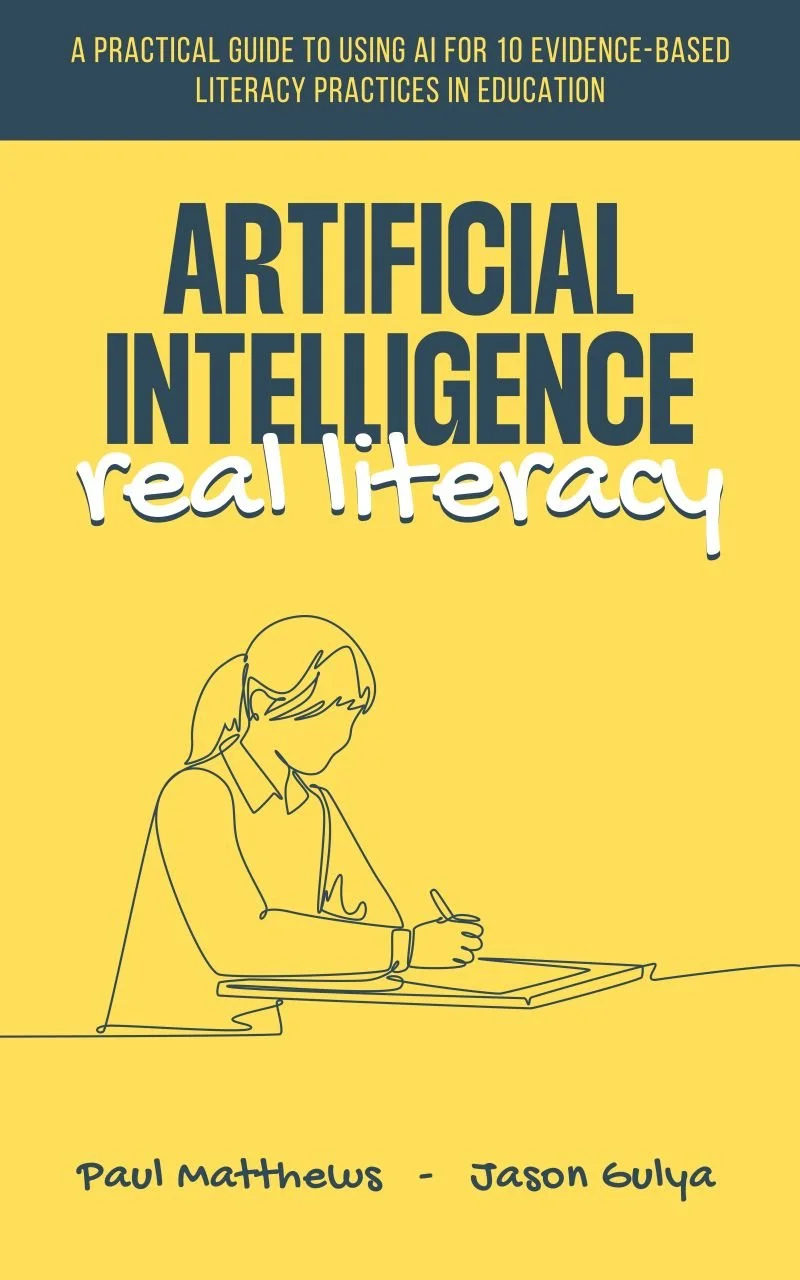Thomas Newkirk's 'The Art of Slow Reading'
There is no doubt about the key word on the cover of my copy of Thomas Newkirk’s The Art of Slow Reading: six time-honored practices for engagement. SLOW is in a huge font-size, misleadingly strident as we head into a book by an author whose intelligence is so measured and gentle. The lower half of the page features a tortoise on a book, in case the message has not got through.
I thought I would revisit Newkirk’s writing after 10 years, partly because of its excellence and relevance for English teachers, but also in the context of the recent public availability of Gen AI, which of course Newkirk never imagines in this book. ChatGPT is only just over two years old, but AI now loudly dominates educational discourse in its multiplying variations and services. It is moving so fast that the November 2022 iteration might even seem quaint.
So, a book about slowness, and a technology which is all about speed. One of the things which AI promises us is a word which for English teachers needs to be challenged, since Newkirk makes the case that it is antithetical to all we do: efficiency. In fact, he writes,
I am convinced that speed leads to inefficiency.
and
I suspect that many who glorify the technological changes that surround us, who revel in the multiple stimuli that beg for our attention, will find this opening one more sad, nostalgic lament for an earlier age that may not have even existed except for a handful of readers. They will say that my advocacy of slowness and deliberateness (and books that ask this of us) is a doomed appeal for a highly inefficient form of reading.
The tech-hyping boosters fail, of course, to understand the nature not just of reading but of thinking itself, and believe that the faster you can do something the better. I have recently read: ‘AI will be able to speed up learning’.
Except certainly in English, as Newkirk points out, learning should not be sped up at all: it is most effective and enjoyable when it takes its own natural pace. In terms of reading he is alongside Maryanne Wolf, who in her book Reader, Come Home: the reading brain in a digital world stressed the vital importance of an unfashionable concept, ‘cognitive patience’ (my comments on her book). A recent scientific paper in Neuron called The Unbearable Slowness of Being’, by Jieyu Zheng and Markus Meister of the Division of Biology and Biological Engineering, California Institute of Technology in Pasadena, states that
The information throughput of a human being is about 10 bits/s. In comparison, our sensory systems gather data at ∼109 bits/s.
Reading and writing are naturally mutually intertwined. As Newkirk puts it,
Writing is, after all, an act of slow reading; we spend a lot of time with our own sentences; we often shape them slowly, we pause, try to find the right word; we read them to recapture momentum.
It is this deliberate practice which AI disastrously blasts past at supersonic speed, and as English teachers our main concern right now has to be that children will become less and less able to write well as an expression of their individual thought, and that they will become cognitively so impatient, seduced by the flashy slickness of AI, that the damage will be permanent. Newkirk states that
Reading and writing are cultural practices, not just technical proficiencies. They are embedded in rituals, cultures, institutions, and histories - all of which provide us with another important kind of knowledge.
He believes that we are ‘fooling ourselves’ if we think that we have ‘transcended [the] limitations of previous generations’.
This is what I think of as the arrogance of the present, and is typical of the hype-merchants of educational technology, despite the long history of disappointment which should show us otherwise, as Daisy Christodoulou demonstrates in her book Teachers vs Tech? The case for an ed tech revolution.
In Chapter 2, ‘The Speed Curriculum’, Newkirk shows how a mistaken belief in speed underlines the curriculum (he is writing about the USA, but the rest of us will recognise this: think of the wide and shallow Junior Cycle curriculum in Ireland). All teachers know that our most precious and fragile resource is time. On page 34 one of Newkirk’s former students, Carly Blauvelt, gives a depressing account of how superficial and speedy her reading is, merely ‘sifting’ material in the straightest path to information: imagine her now using GenAI. And today I read in the first edition of Jane Rosenzweig’s newsletter The Important Work an essay by teacher Spencer Lane Jones which reports on ‘What Students are Using AI for’. When she comes to reading, she states that this was perhaps the most concerning set of responses:
The short-form survey responses suggest that students are using AI to read for them as much as, if not more than, they are using it to write for them. This is a particular phenomenon that may not yet be getting the attention it deserves in mainstream media.
In ‘The Culture of Distraction’ (from page 31), Newkirk quotes Neil Postman, who is more and more relevant in the contemporary world, from his book Teaching as a Conserving Activity. This is something I have cited regularly in my own recent writing:
Schools, Postman argues, should act on a thermostatic principle: a thermostat acts to cool when a room is too hot, to heat when too cool. Schools should act to check (and not imitate) some tendencies in the wider information environment: “The major role of education in the years immediately ahead is to help conserve that which is necessary to a humane survival and threatened by a furious and exhausting culture.” It follows that schools need to take a stand for an alternative to an increasingly hectic digital environment.
These are as wise words as I have come across for education today, and Postman could hardly have imagined in 1979 how frighteningly exact his term a furious and exhausting culture would turn out to be. Newkirk feels we cannot be passive in the face of technological determinism, and that we are not helpless to stand in the way of these alterations of cognition. I wrote this piece on what English teachers can do last term partly as a reaction to the Trump re-election and the darknesses in Gaza and Ukraine, but also in the face of AI developments, and the ways these are already exhausting and depressing teachers. And in a reproduced commentary piece on teacher stress in Chapter 5, Newkirk writes (I am here looking at you, Leaving Certificate reform in Ireland):
When teachers lose control of decision-making - when they prepare students for tests they have no role in designing (and often no belief in), when they must follow the plans designed by others, when they are locked in systems of instruction and evaluation they don’t create or even choose - they will not be relieved of stress. Their jobs are not made easier, they are made harder and more stressful. Some find a way to resist, but others acquiesce, though they feel, as one area teacher put it, that “the joy is being drained out of teaching”.
More punchily he states:
Stress is created when humans lose a sense of their own agency.
The six ‘time-honoured practices for engagement’ referred to in the subtitle of this book are examined in Chapters 3 to 8: performing, memorizing (a particular bug-bear of shallow critics of teaching and learning), ‘centering’ our own response, the pleasures of difficulty (again, anathema to technology, which attempts to erase valuable friction and complexity), reading like a writer, and elaborating. Throughout these chapters there are too many well-informed examples to cite. Newkirk always writes with such a personable, personal and jargon-free style. That style re-enacts the carefulness of his thinking and his attractive lack of dogmatism: he quotes John Dewey in pointing that that the most important factor in the training of good mental habits consists in acquiring the attitude of suspended conclusion and adds that:
Thinking is by definition slow.
This book is an eloquent defence of what should be central to our profession and our classrooms.







OpenAI has set its eye on Irish secondary schools.